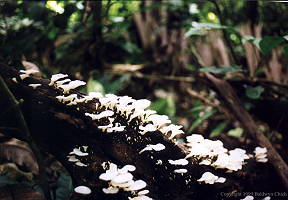
|

|

|

|
The final full day at La Selva, we head to the tower by 7am. Today, ther isn't much avian action, but we do spot a pair of beautiful double-toothed kites. From the tower, we have our most aggressive hike, and march for about five hours through the underbrush. The trail narrows, and zigzags over the hills, and at times we hit enormous patches of quicksand. This IS quicksand! I stepped in a patch, and it looks like stable ground, except for being a bit muddy, and sank to my knee, filling my rubber boot with mud, and water. That was at the beginning of the hike too. Daniel cut saplings along the way and put them alongside logs in the quicksand for support.
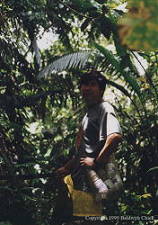 Daniel |
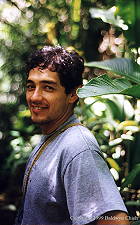 Gus |
The march brought us to higher ground, and the vegetation transitioned from dense, tall trees, to thinner patches like that we saw on the other side of the Napo yesterday. Along the way, we drink water from a cut vine for refreshment.
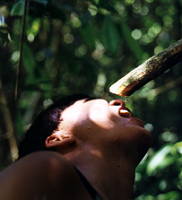
|
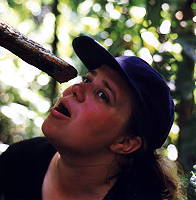
|
Another highlight of the trip was seeing a poison arrow frog. Daniel and Gus were not afraid to handle it, but under its arms and legs the frog packs a poison that's a hundred times more potent than morphine. The natives use the poison to rub on their arrows for monkey hunting. Scientists have successfully raised the frog in captivity, but it did not produce the poison. It is known that the frog's diet includes army ants, but even given this does not yield the poison. It is still unknown how it goes about generating the material. The colour is extremely colourful with a blue underbelly, warning of the poison it carries.
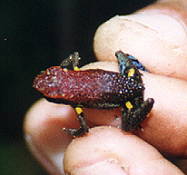
Speaking of army ants, we did get to see these powerful insects along the trail as well. They pack huge, sharp and powerful pinchers, that the natives actually use to close off wounds in the wild. By pressing them against a cut, they're decapitated after the ants bite down to clamp it shut.
Finally, we reached one of the campsites sometimes used for the Amazon Light Brigade. It wasn't very far from where we started, but basically we did a wide circle. Our waiter showed up with a huge ice chest on his back, providing us with box lunches and water. We certainly can't complain about the service!
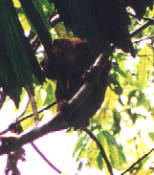 Red howler monkey |
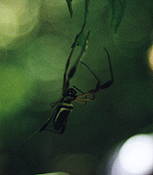 4" spider with a poisonous bite |
We get back to the lodge mid-afternoon, and wash part of the jungle off in a cold shower. I'm determined to catch a pirahna, so I grab my gear and sit in the baking afternoon sun to fish. After several bites, I catch a respectably sized lisa fish, but the pirahna elude me this trip. The cook does an excellent job cooking the fish up for a snack before dinner.
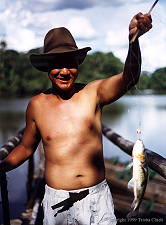
Our trip comes to a close, and by this time we're looking forward to heading home. The next morning the clouds that have threatened us finally break, and it rains, but not too heavily. It did make the three hour canoe ride back to Coca a bit cold and damp. Once there, we begin a long series of plane rides from Coca to Quito, and that night Quito to Guayaquil, Guayaquil to Houston, and finally Houston to San Francisco, just 30 hours since we woke up this morning. This brings it to thirteen plane rides in fifteen days!
Our visit to the Amazon jungle, shows us how tenuous our claim is here. A single ant could knock you out for a day, and insects like the lightning bug, or the ants who covered Trisha's socks come and go from our cabin as they please. But in our short visit to the jungle, it seems that their claim to the space is greater.
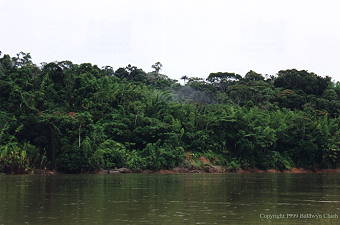
|
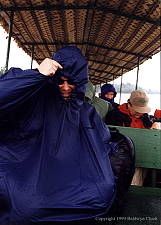
|